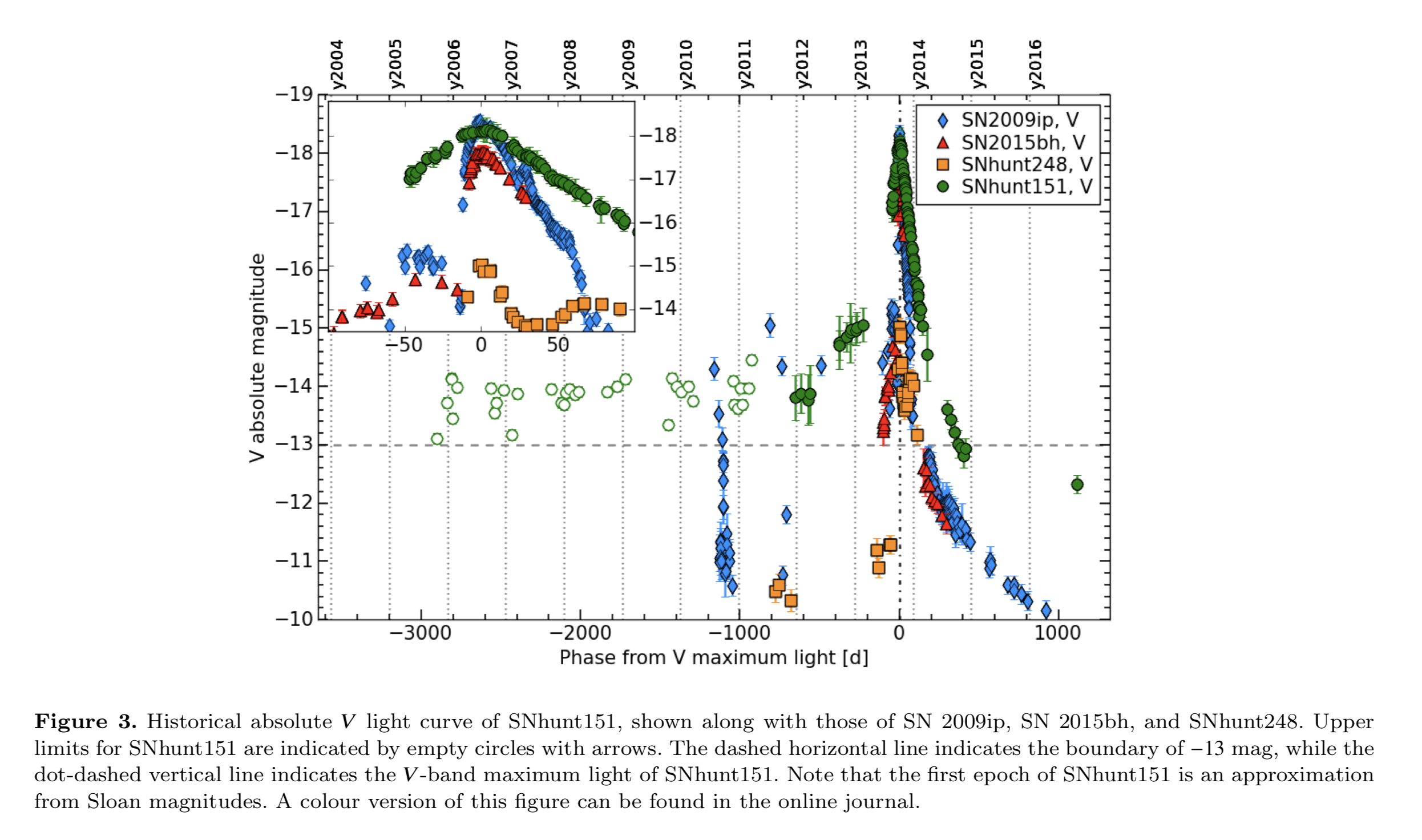Padova-Asiago Supernova Group
Highlights
SNhunt151: an explosive event inside a dense cocoon
Elias-Rosa, N. et al. 2018, MNRAS 475, 2614 (link to pdf)
SNhunt151 was initially classified as a supernova (SN) impostor (nonterminal outburst of a massive star). It exhibited a slow increase in luminosity, lasting about 450 d, followed by a major brightening that reaches Mv = -18 mag. No source is detected to Mv >= -13 mag in archival images at the position of SNhunt151 before the slow rise. Low-to-mid-resolution optical spectra obtained during the pronounced brightening show very little evolution, being dominated at all times by multicomponent Balmer emission lines, a signature of interaction between the material ejected in the new outburst and the pre-existing circumstellar medium. We also analyzed mid-infrared images from the Spitzer Space Telescope, detecting a source at the transient position in 2014 and 2015. Overall, SNhunt151 is spectroscopically a Type IIn SN, somewhat similar to SN 2009ip. However, there are also some differences, such as a slow pre- discovery rise, a relatively broad light-curve peak showing a longer rise time (~ 50 d) and a slower decline, along with a negligible change in the temperature around the peak (T <=10^4 K). We suggest that SNhunt151 is the result of an outburst, or a SN explosion, within a dense circumstellar nebula, similar to those embedding some luminous blue variables like Eta-Carinae and originating from past mass-loss events. 107
